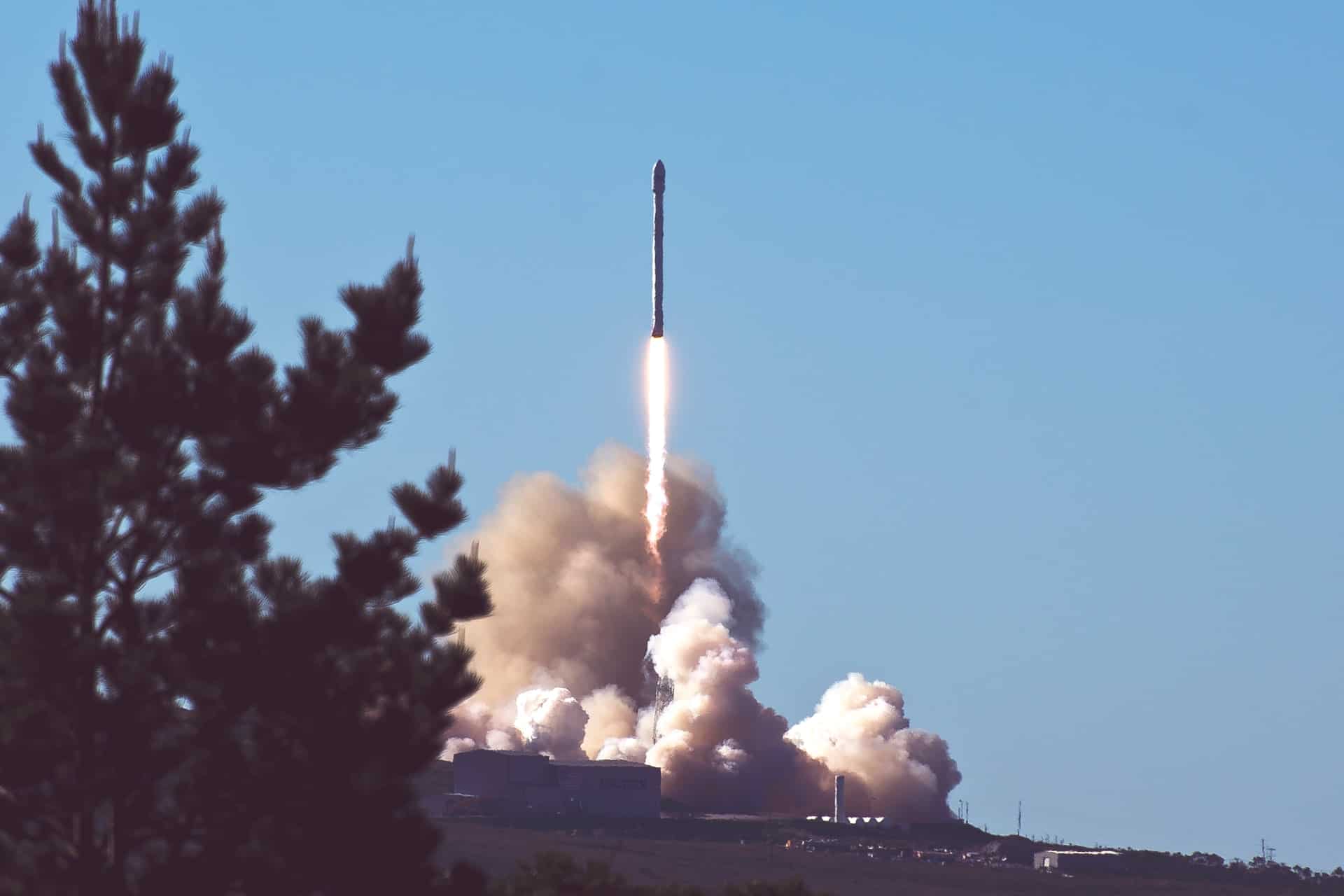SpaceX’s Falcon 9 is an engineering marvel that is steadily inching its way to iconic status. The two-stage launch vehicle is Elon Musk’s pride and joy, and it is the latest in a line stretching back to 2006. The rocket’s achievements and missions have been well documented and lauded. However, the environmental impact of this craft is yet to be explored fully.
The Falcon 9 produces 1,115 tonnes of carbon per launch. The launch vehicle makes use of a liquid oxygen and Rocket Propellant 1 (RP-1) fuel blend. The production of the liquid oxygen leads to a by-product of carbon dioxide while the burning of RP-1 also deposits soot into the atmosphere.
We take a closer look at the Falcon 9’s by-products and how much damage they are capable of wreaking on the environment.
How much pollution does a Falcon 9 produce?
The Falcon 9 is a high-performance medium-lift launch vehicle that is designed (and certified) to transport humans and cargo to the International Space Station. SpaceX has been contracted by NASA to use the vehicle to ferry astronauts to the ISS since 2008. The Falcon 9 has the most launches among all (currently operational) U.S. rockets, and the latest version, the Block 5, is regarded as the most advanced launch vehicle on Earth.
The lofty credentials and heavy workload mean that this thing has to be packing some serious horsepower. In true Elon Musk fashion, horsepower is exactly what we get. The rocket is capable of hauling payloads of up to 23,000 kilograms to low Earth orbit thanks to its 9 massive Merlin engines (first stage). The rocket can also carry a 4,000-kilogram payload to Mars.
Behind all of that power are a blend of liquid oxygen and Rocket Propellant-1 (RP-1) that combusts spectacularly but keeps cool enough to avoid rupturing the engines. However, the amount of gases and smoke expelled from the rocket on each launch leads one to wonder just how much harm is being done to the environment.
Now, RP-1 is simply a refined branch of the rocket-oriented kerosene family tree. When it is burned, it provides thrust that propels the rocket. The waste product of this reaction is carbon dioxide, a major greenhouse gas that contributes to global warming.
Burning RP-1 is not the only source of carbon dioxide, as far as this rocket is concerned. The RP-1 must be paired with a coolant to help minimize damage to the engines.
Enter liquid oxygen, one of the most efficient coolants around. One problem… the liquid oxygen is not kept on-site and needs to be produced as and when needed. The production of liquid oxygen is done via cryogenic processes. Another problem…these cryogenic processes expel a large amount of carbon dioxide too. In fact, the rocket produces more carbon dioxide while MAKING liquid oxygen than it does while burning kerosene.
Other Falcon 9 pollutants include water and a variety of acids. Also, like most launches, Falcon 9 missions add pollutants like soot into the upper reaches of the atmosphere. Soot (also known as black carbon) can remain in the stratosphere for several years, and a sufficient build-up of it will result in a heat trap that prevents excessive terrestrial heat from escaping into space. Over time, this will exacerbate the global warming problem.
Falcon 9 CO2 emissions
The Falcon is a beast when it comes to launching, and it posts some incredible performance numbers. Equally tremendous are the CO2 emissions the rocket is capable of.
Now, burning any given mass of kerosene will result in carbon waste that weighs three times as much. For instance, 1 kilogram of kerosene will produce 3 kilograms of carbon. This means that kerosene has a carbon density of 3 kilograms per 1 kilogram of kerosene.
As we mentioned above, the burning of kerosene is not the biggest CO2 producer on the Falcon 9. The production of liquid oxygen via fractional distillation in a cryogenic air separation plant also results in large volumes of carbon dioxide being expelled. Air separation is, essentially, taking regular air from the atmosphere and splitting it into its basic elements.
All in all, the Falcon 9 produces 465 tonnes of carbon from burning kerosene, and about 650 tonnes of carbon from the air separation processes that produce liquid oxygen. This gives us an unbelievable total of 1,115 TONNES of carbon…per launch.
With over 100 launches under its belt since 2010, the Falcon 9 has released well over 100,000 tonnes of carbon into the atmosphere. While this is not a significant amount on the global stage, we must remember that these launches have been rather infrequent so far.
With the advent of SpaceX’s Starlink satellite internet constellation, Elon Musk and co. are “ramping up” the number of Falcon 9 launches. Most of the Starlink launches involve transporting numerous satellites into orbit. As of 1 November 2020, the company has launched 895 Starlink satellites, with 12,000 planned in total.
Combine all of these with the rocket’s NASA commitments and you have a workload that will more than pique the interests of environmentalists everywhere. All of this before we even discuss SpaceX’s plans to start moving into commercial space tourism. The Falcon 9 is expected to facilitate the initial tourist trips to the International Space Station sometime in 2021, hinting at even bigger workloads for the rocket in the future.
How many gallons does the Falcon 9 use?
If you are anything like my penny-pinching self, then your preferred unit of measurement, where vehicle fuel is concerned, is dollars and cents.
SpaceX, though, is a little looser with the purse-strings. Fuel costs for the current generation Falcon 9 are estimated to be about US$200,000 per launch. This translates into nearly 25,000 gallons of RP-1 and almost 40,000 gallons of liquid oxygen in the first stage. The second stage is filled with 4,600 gallons of RP-1 and 7,300 gallons of liquid oxygen. That tots up to 29,600 gallons of kerosene, and 47,300 gallons of liquid nitrogen. That’s 76,900 gallons (291,098 liters) of high-octane rocket fuel. Per launch.

